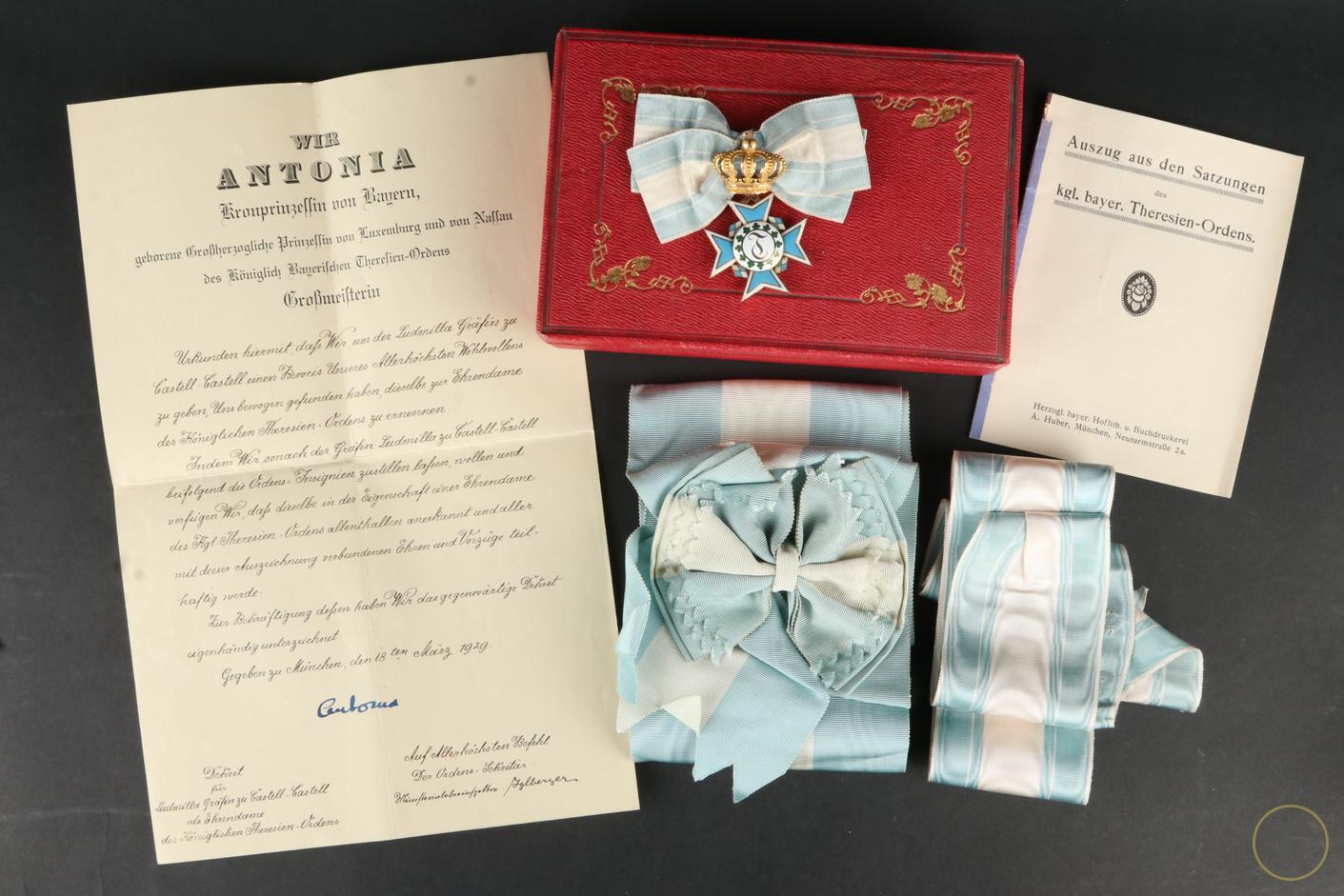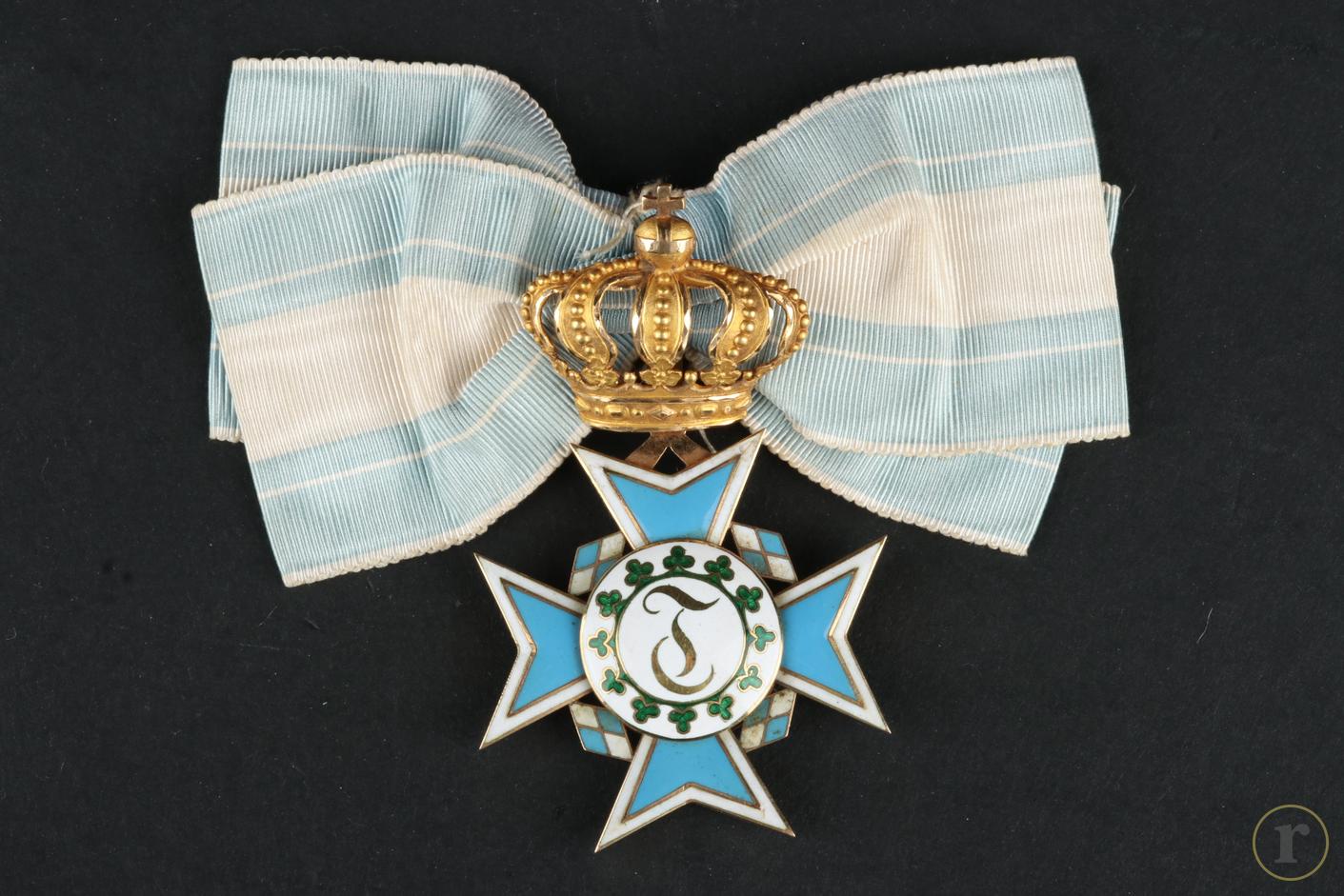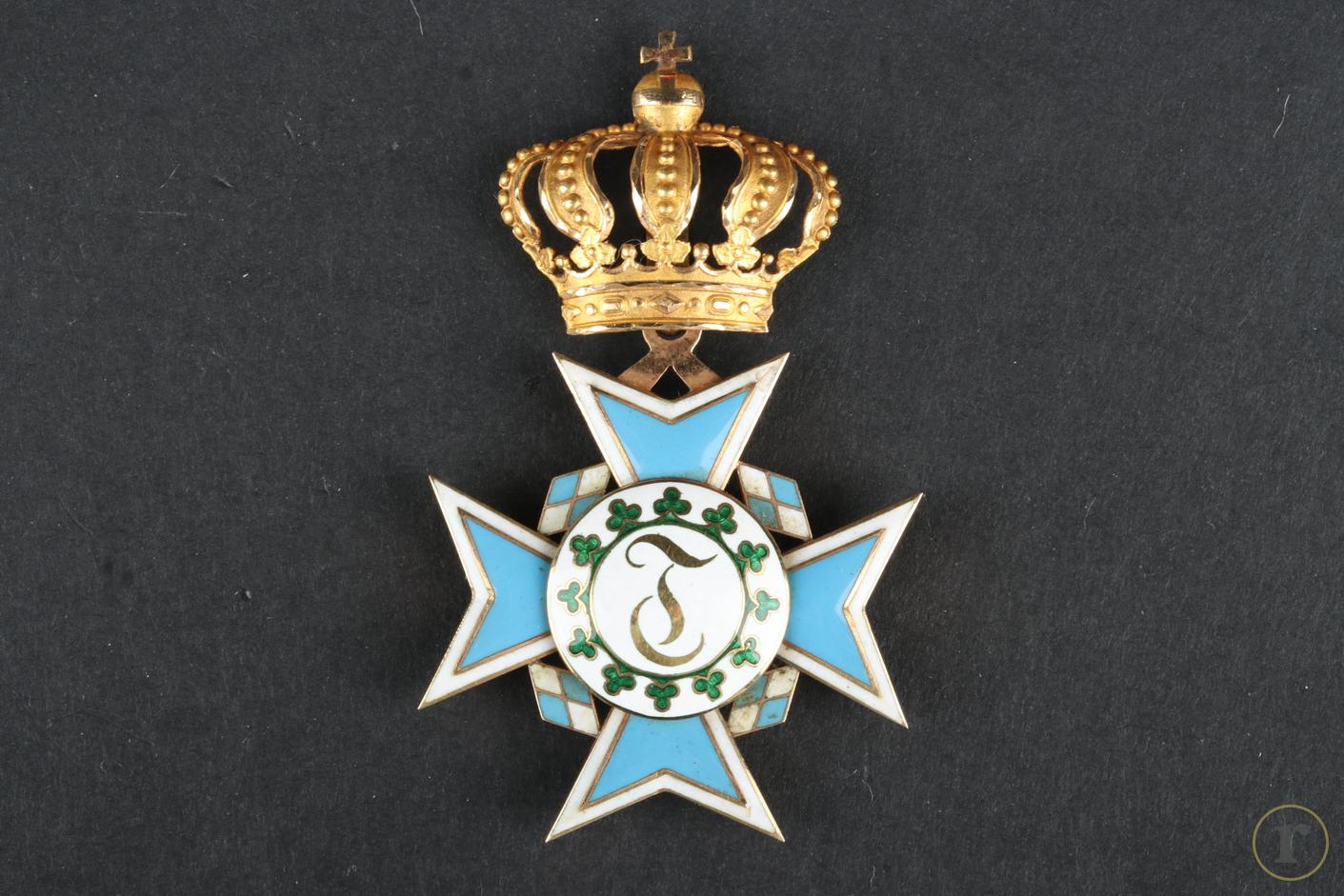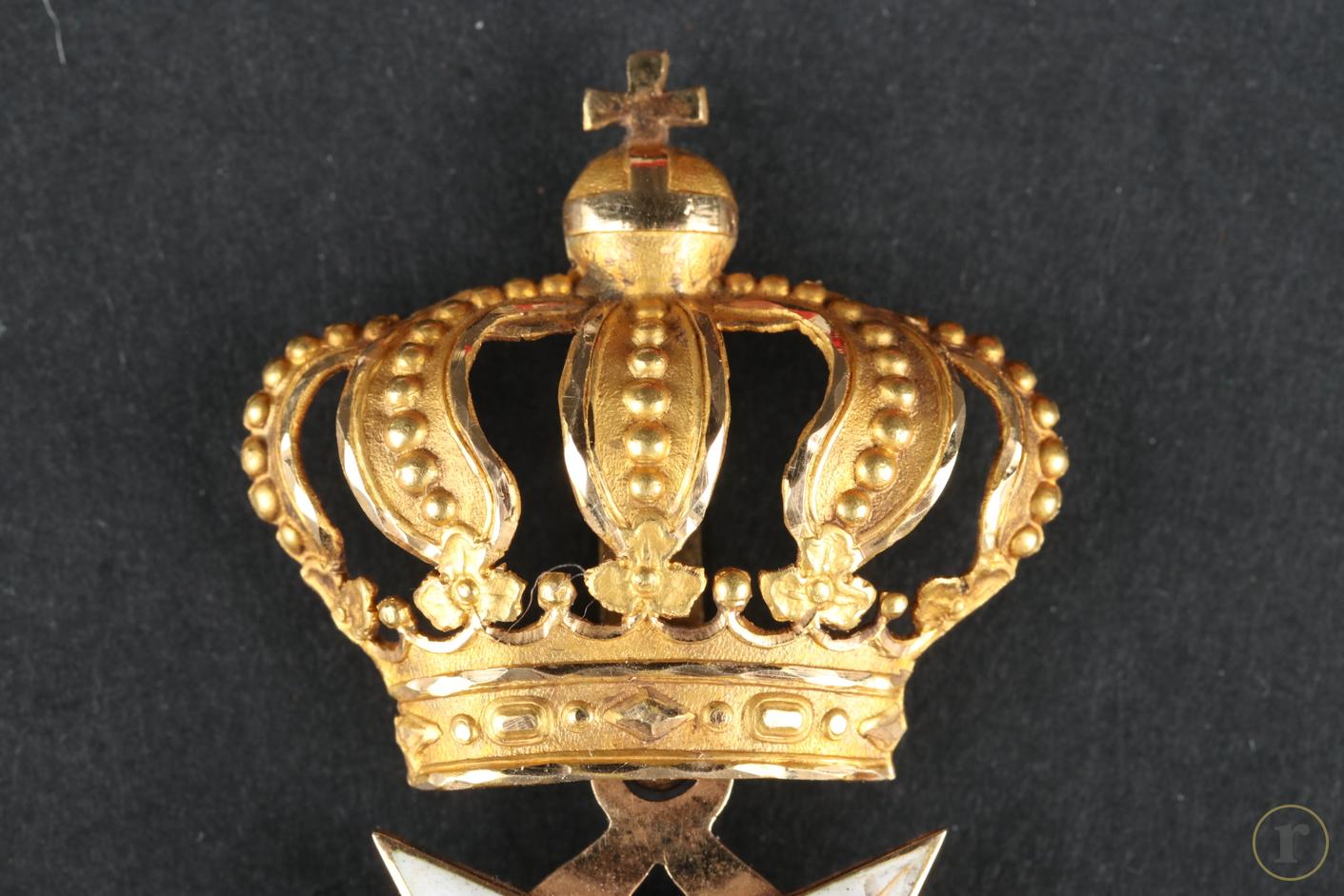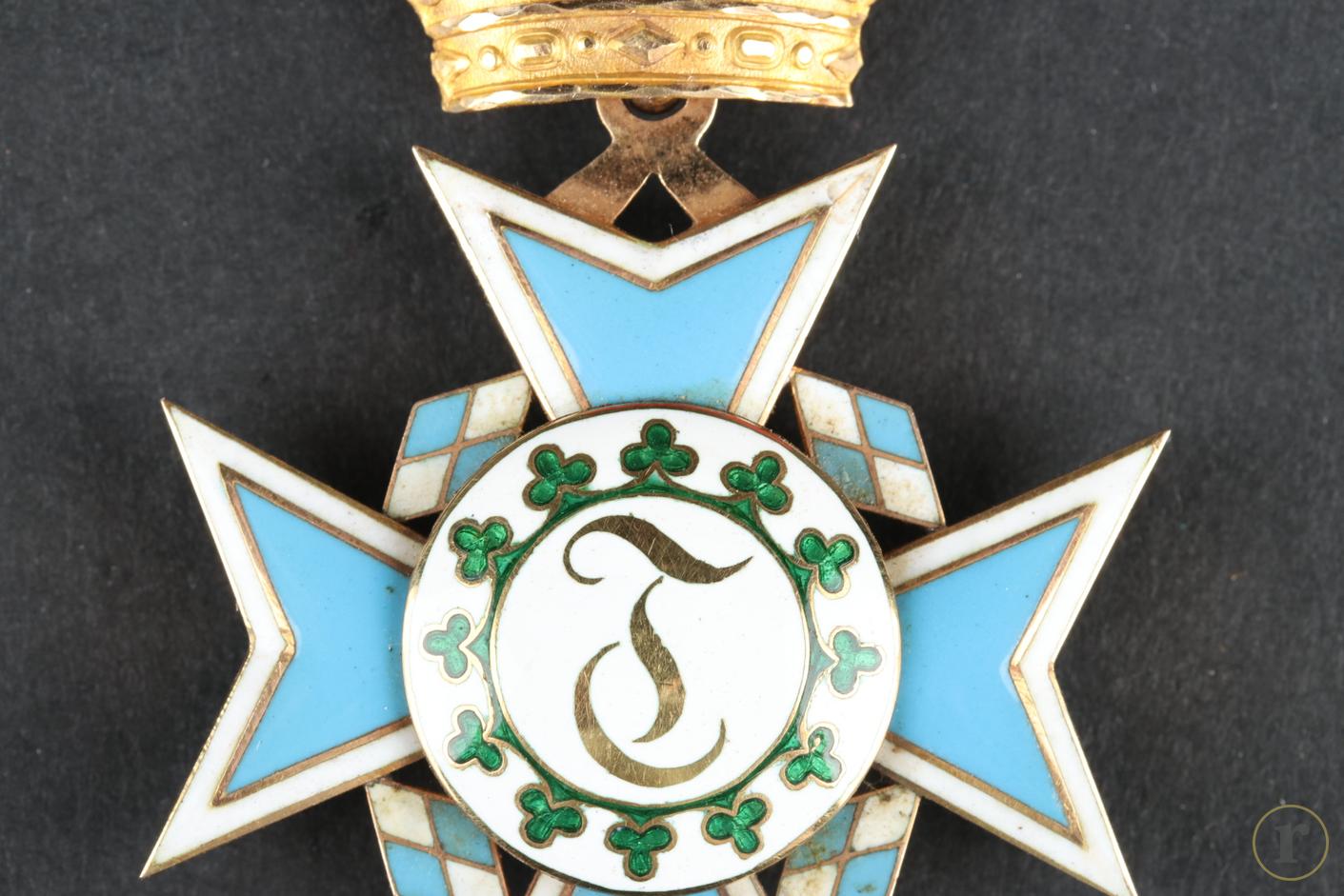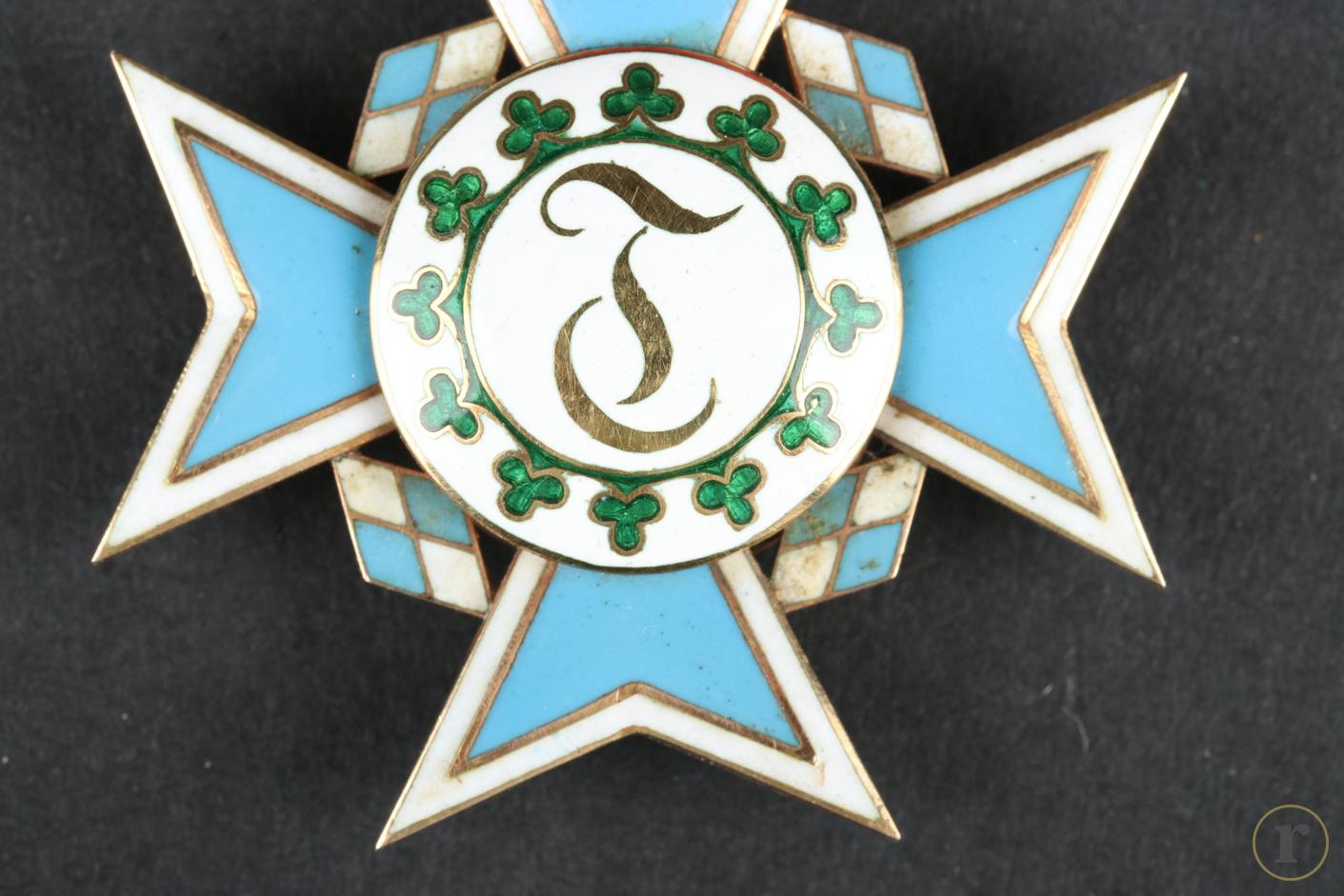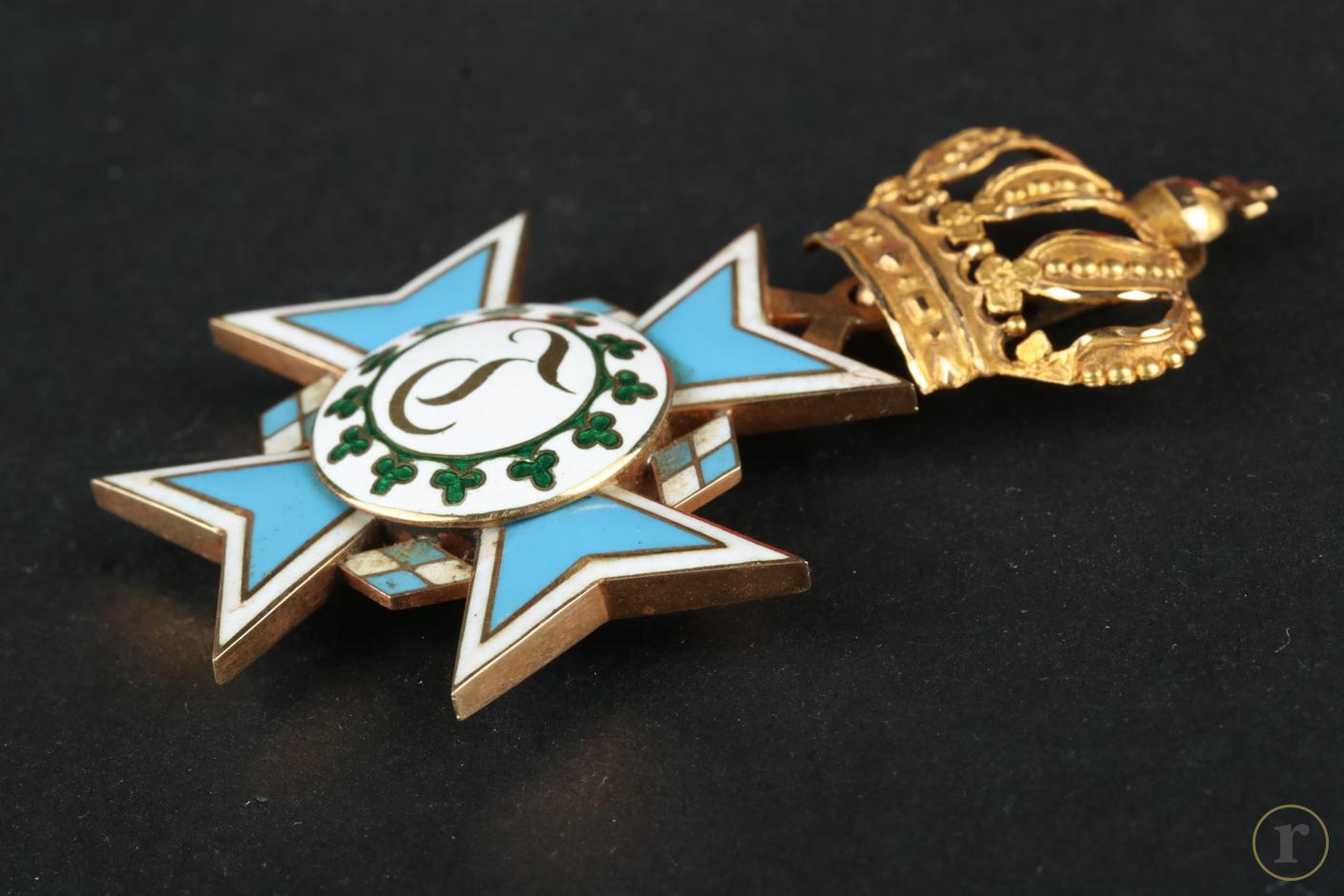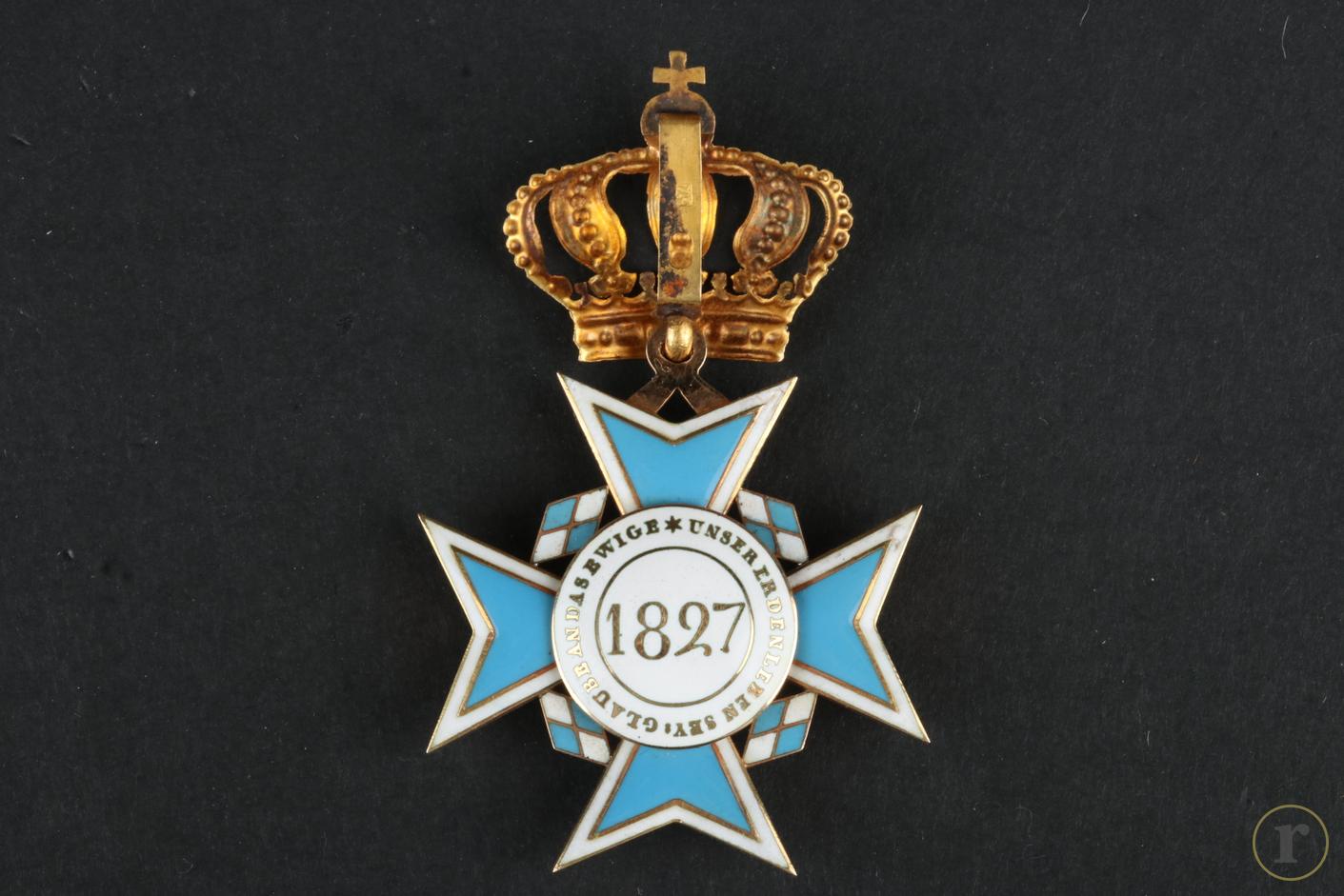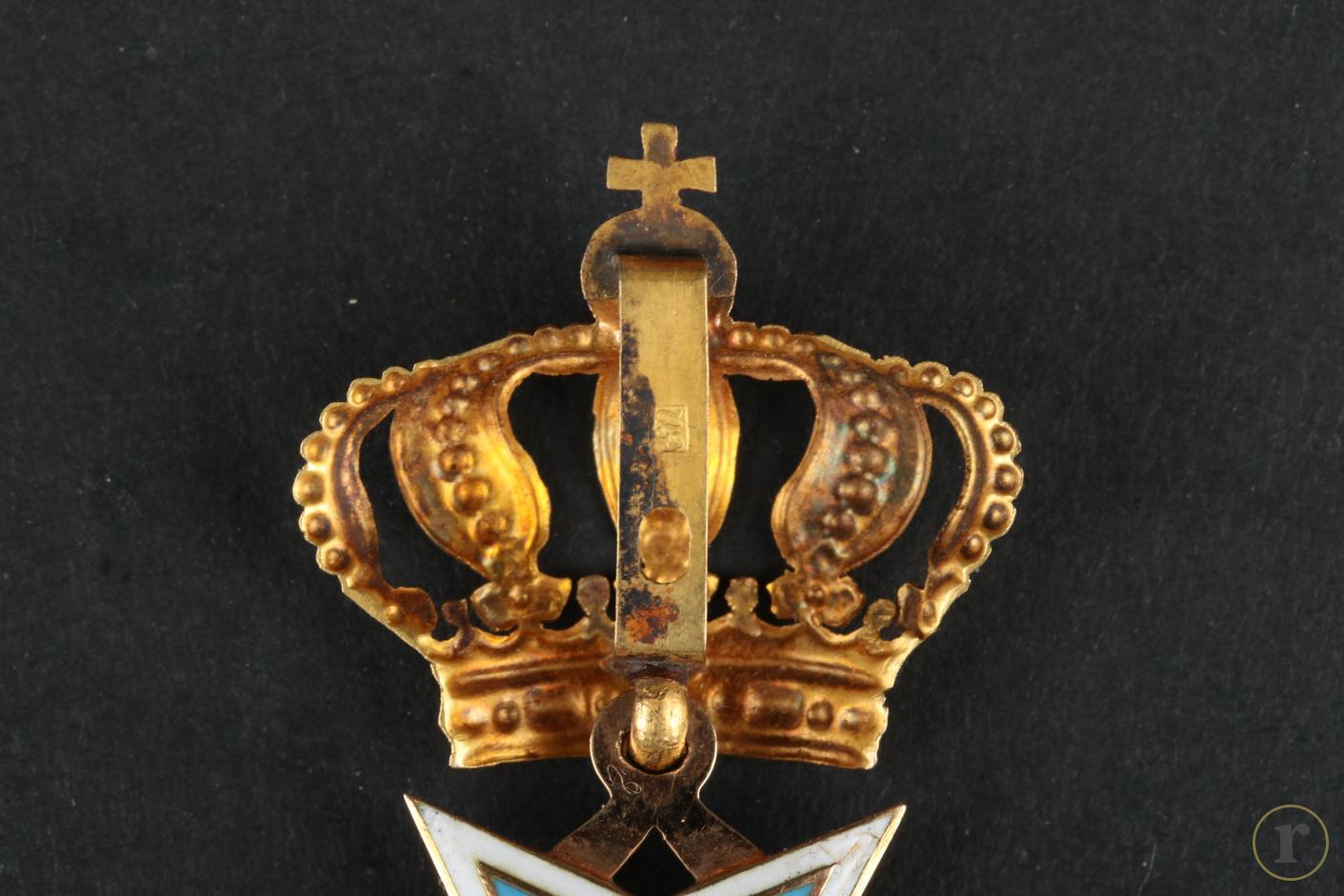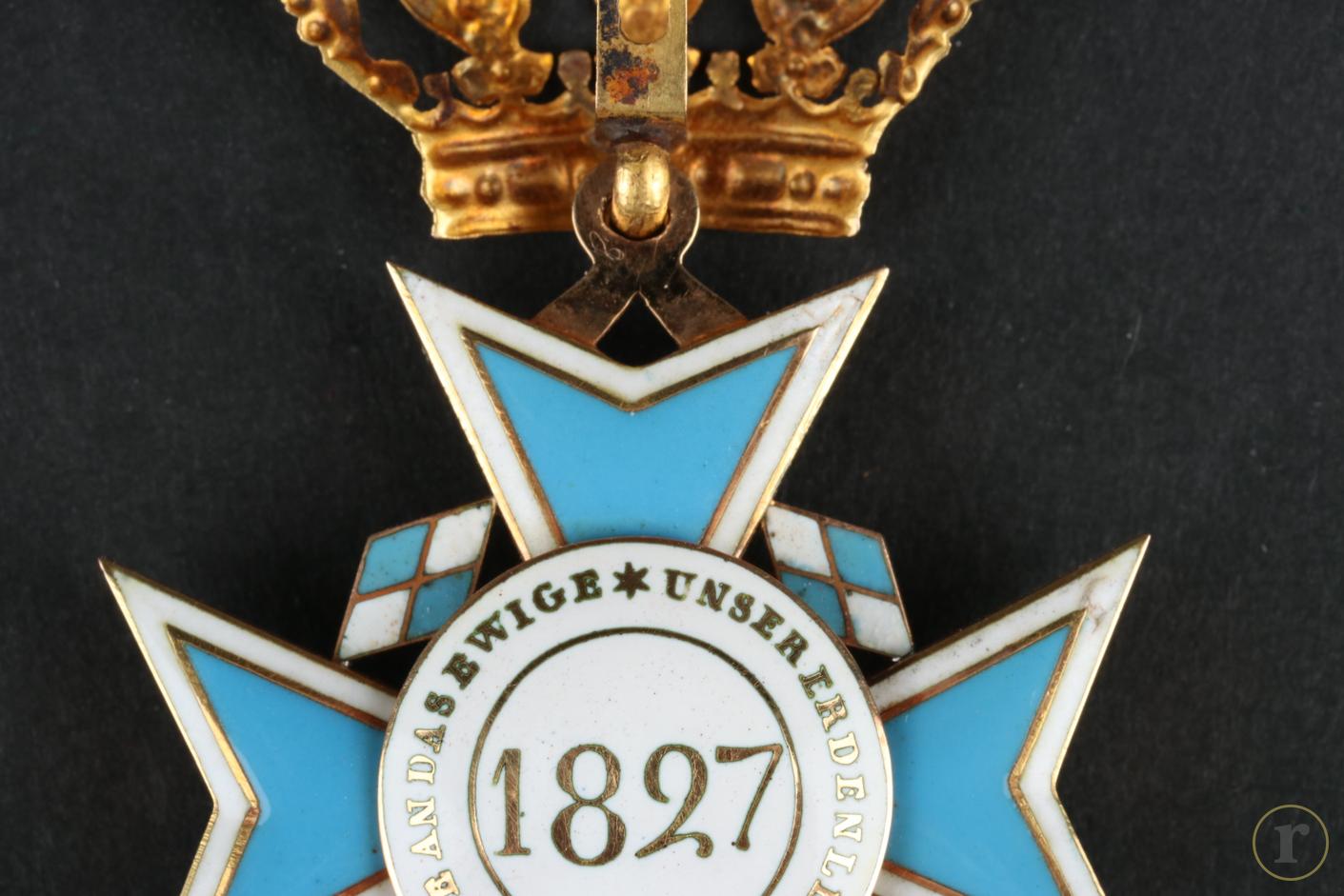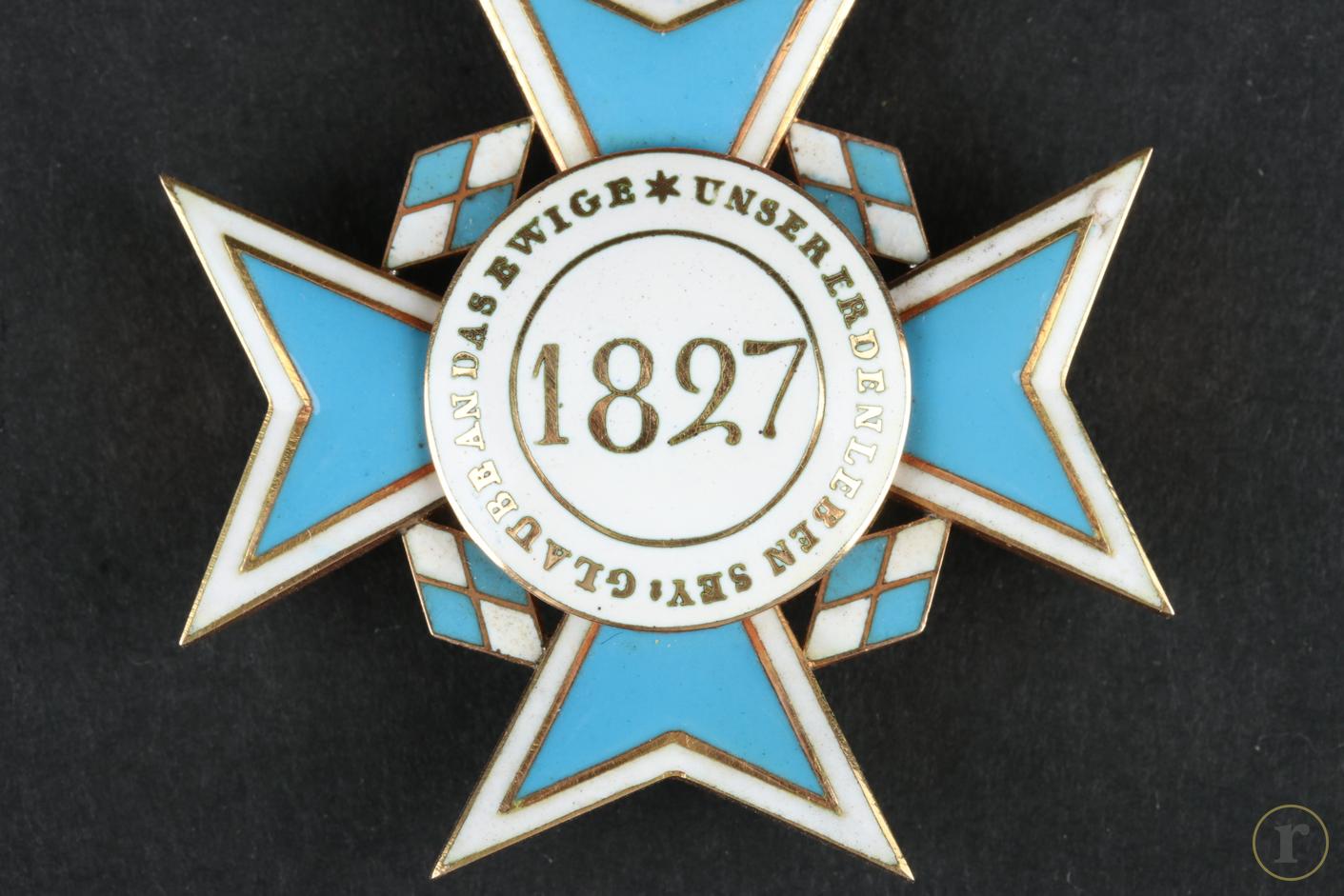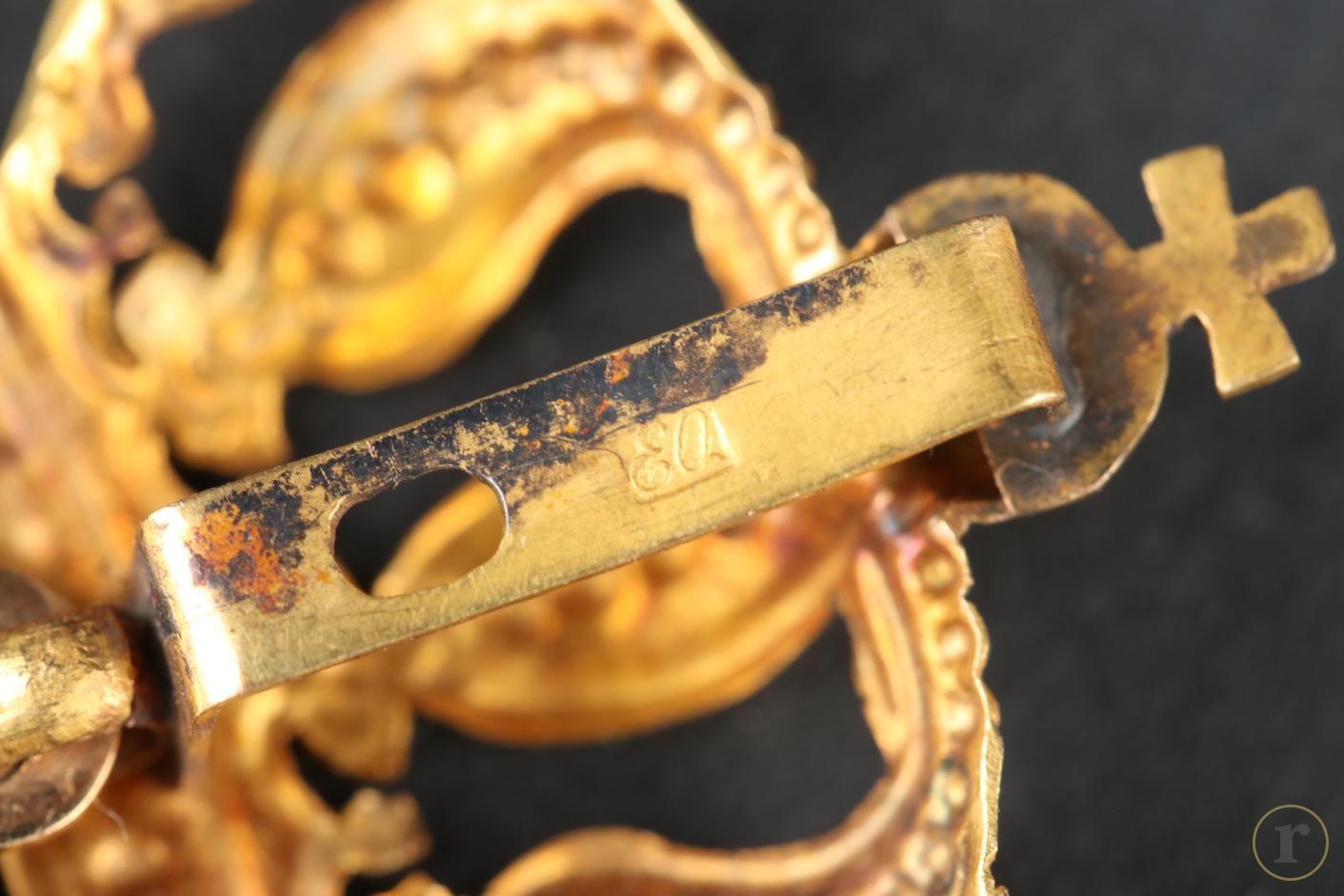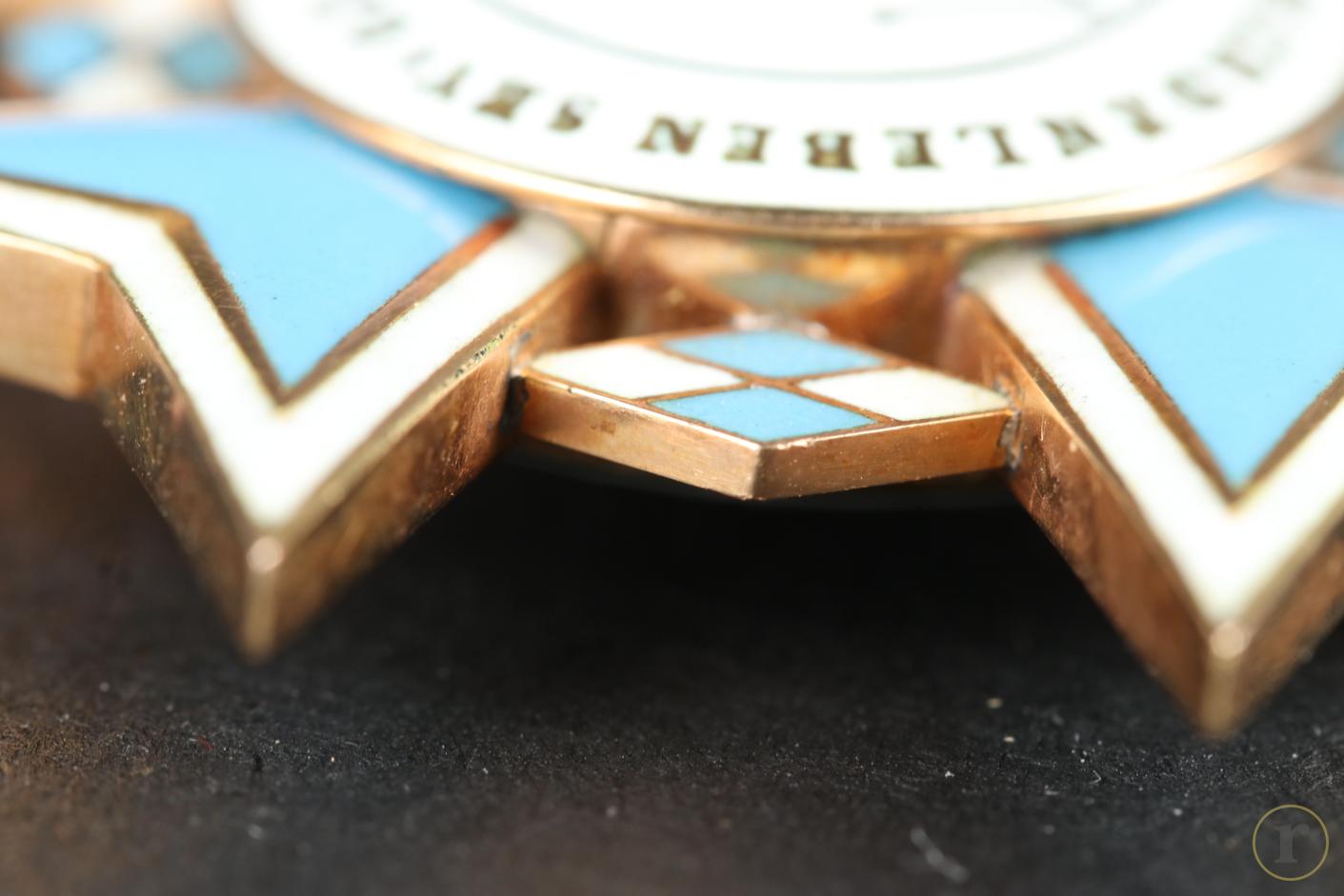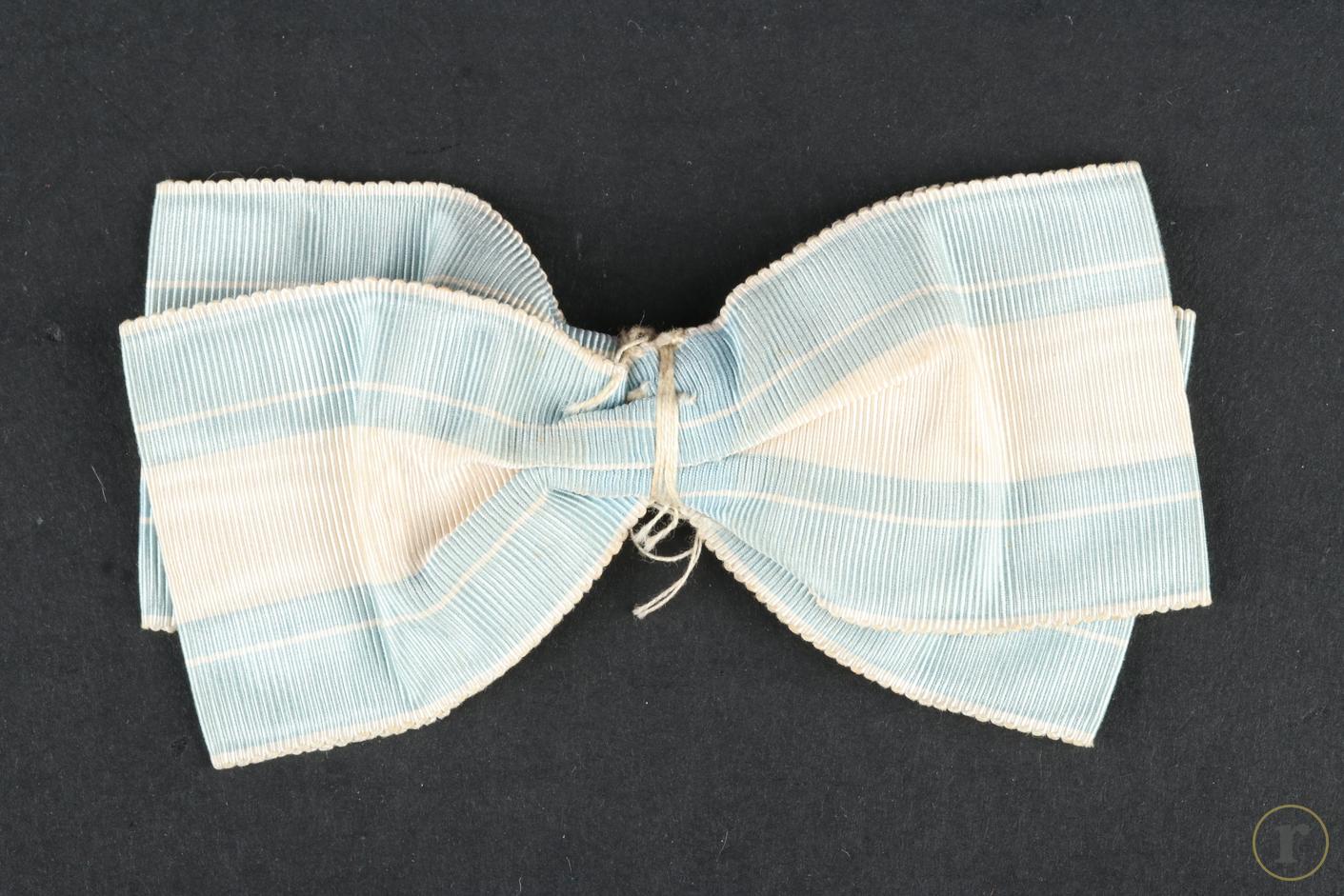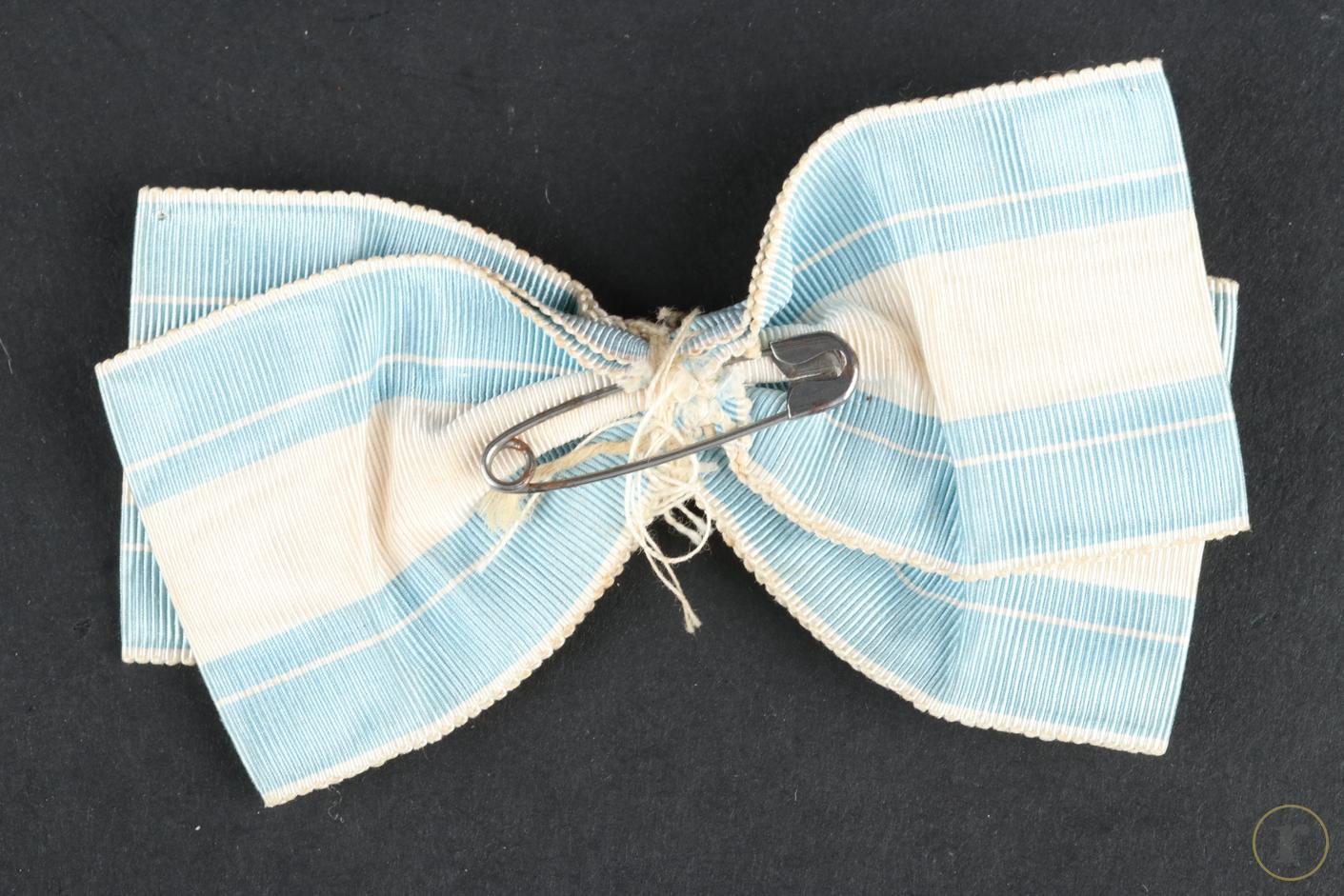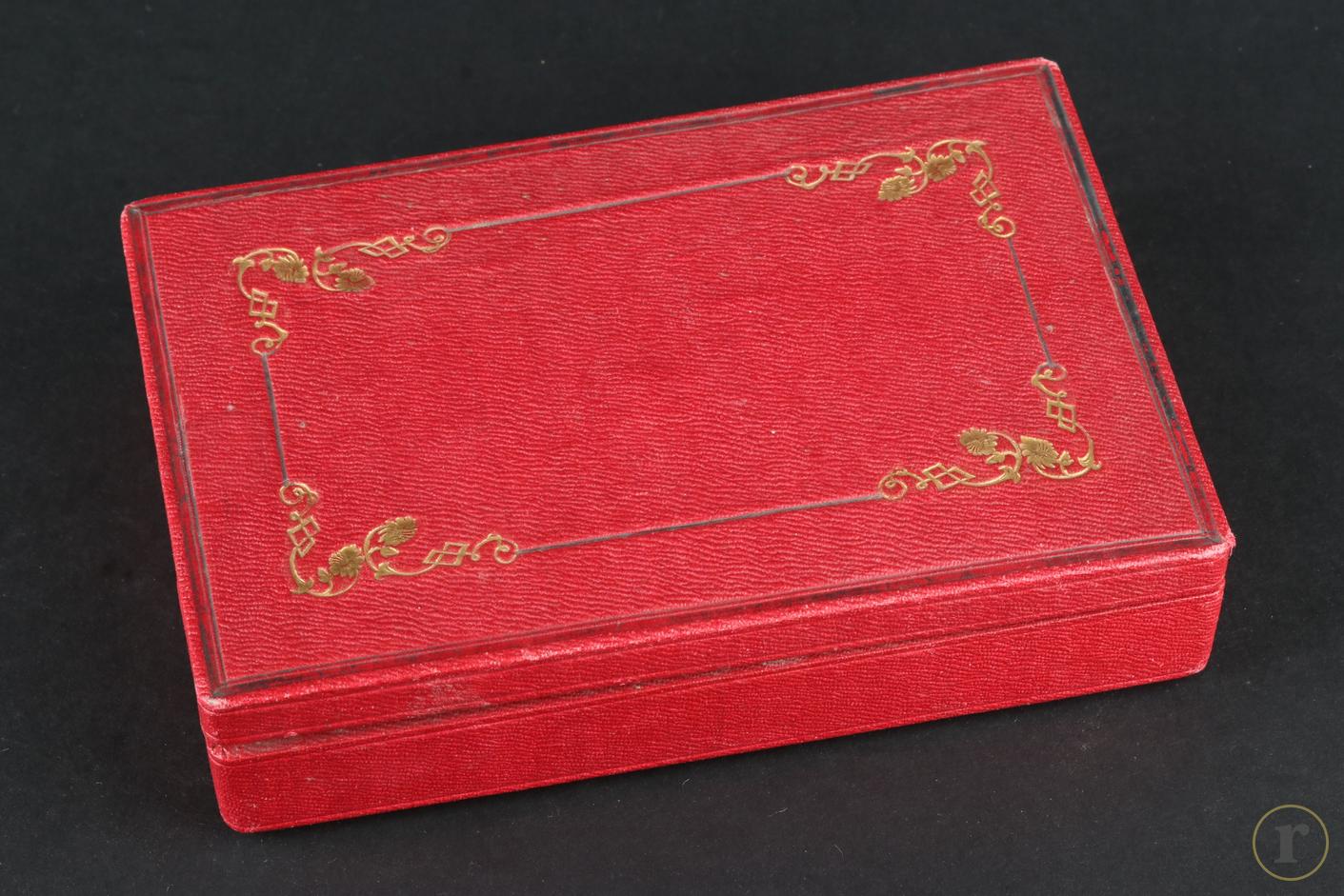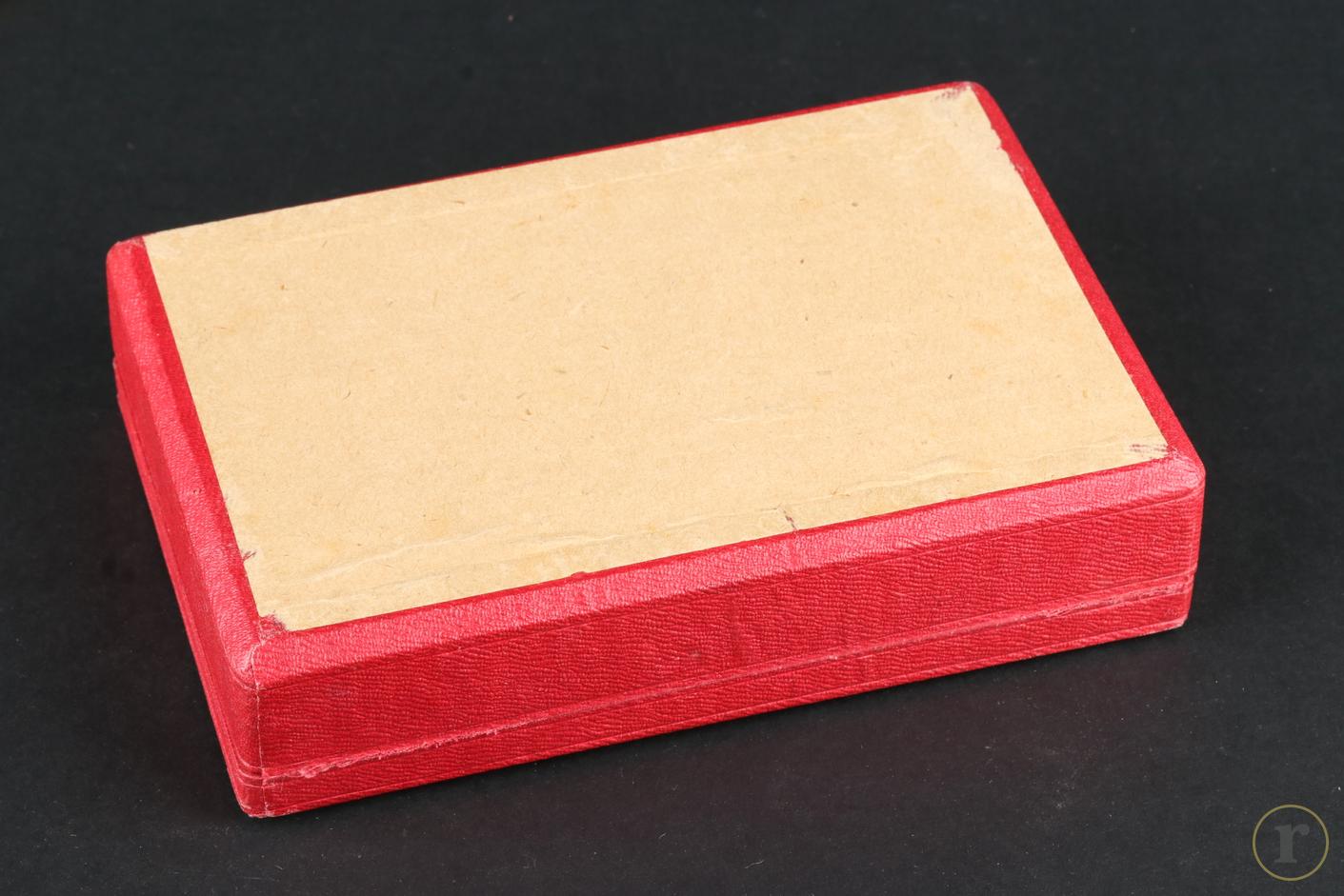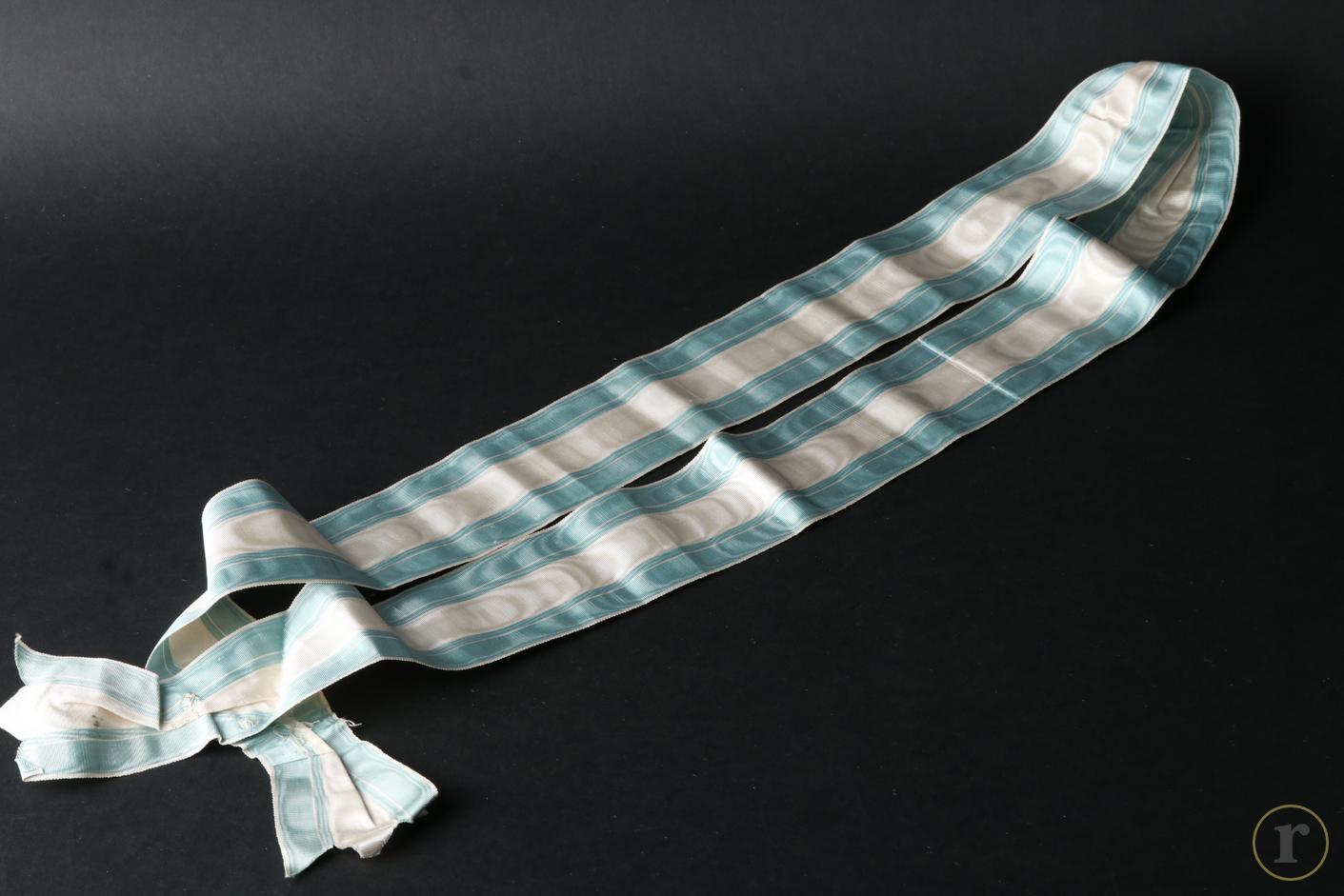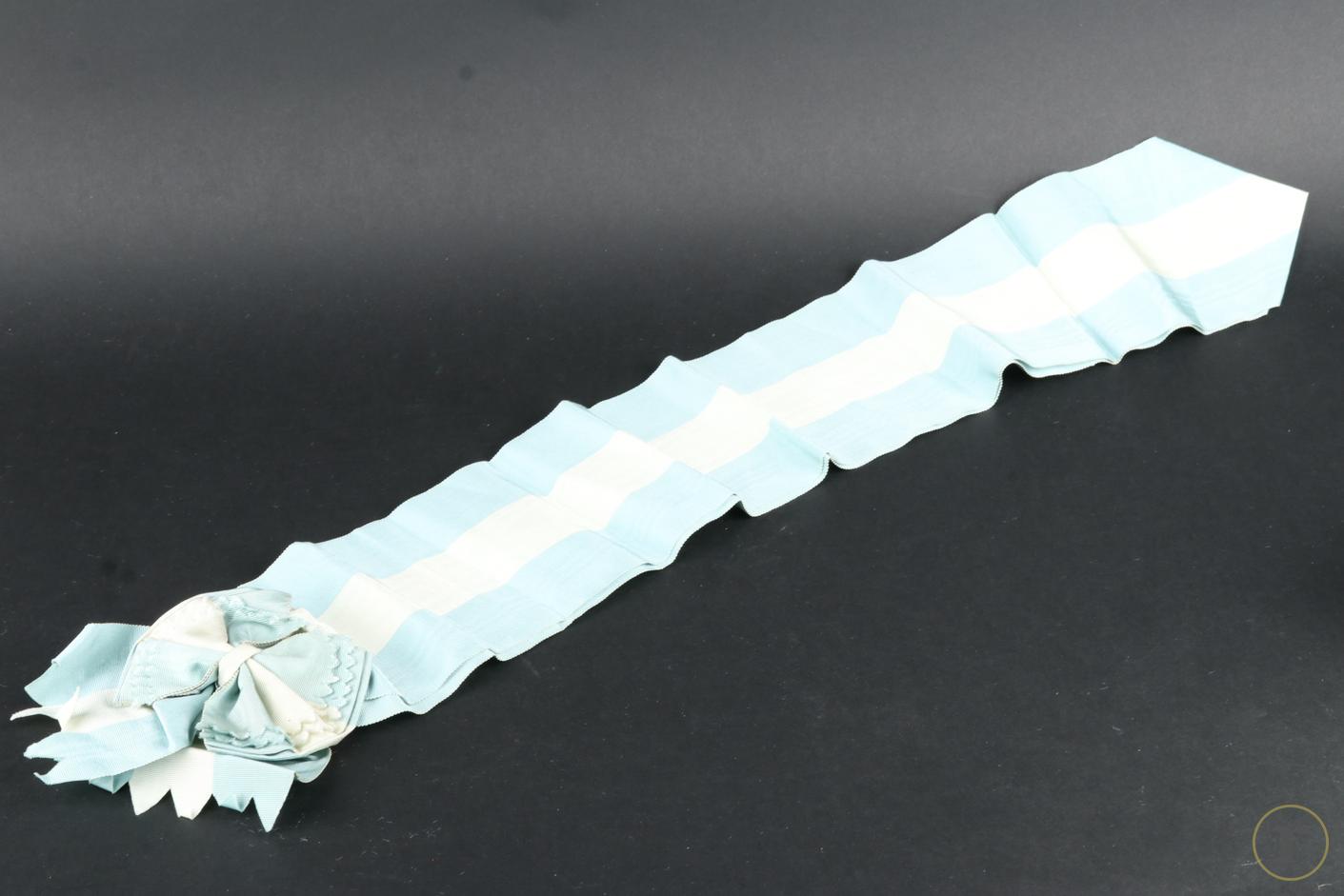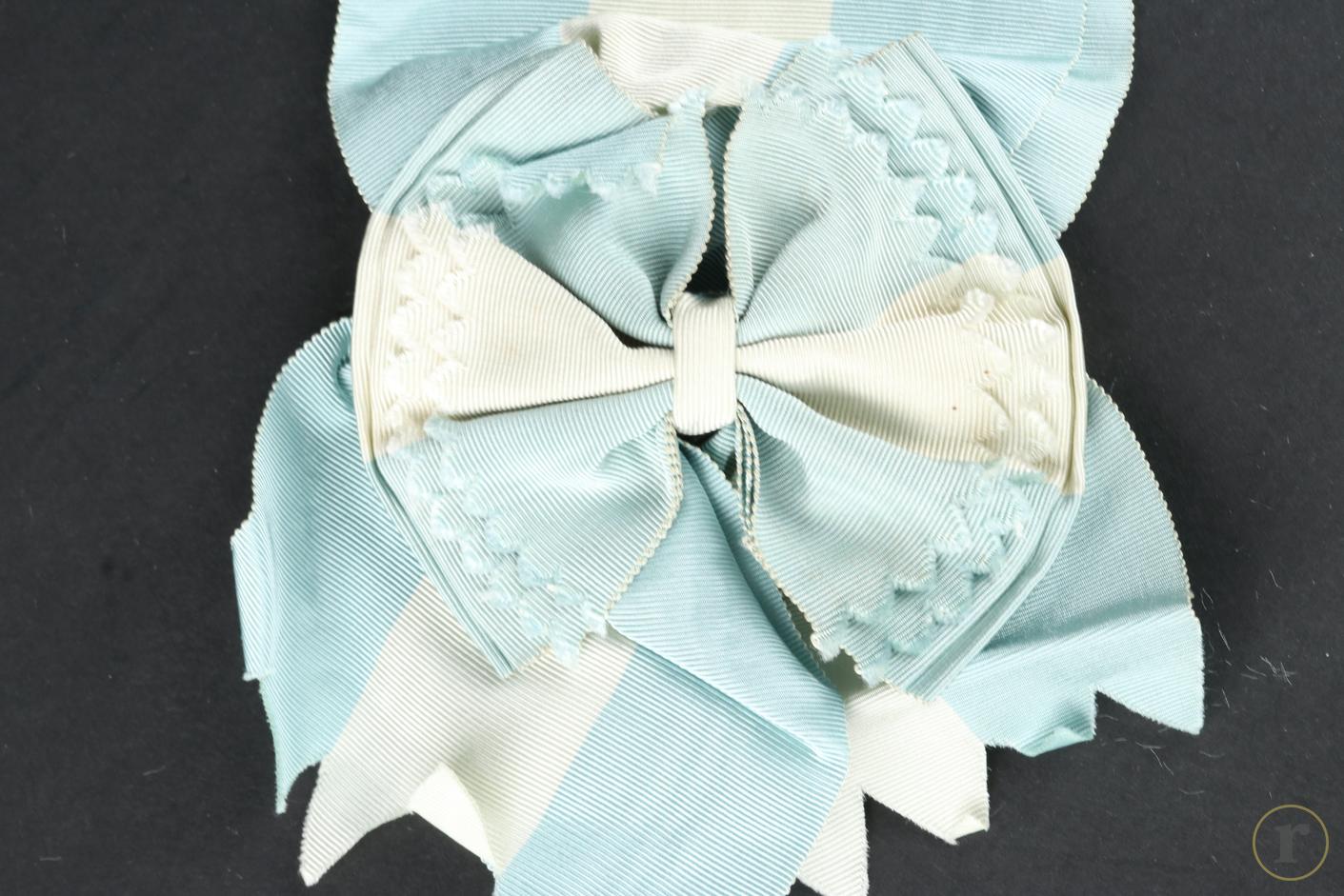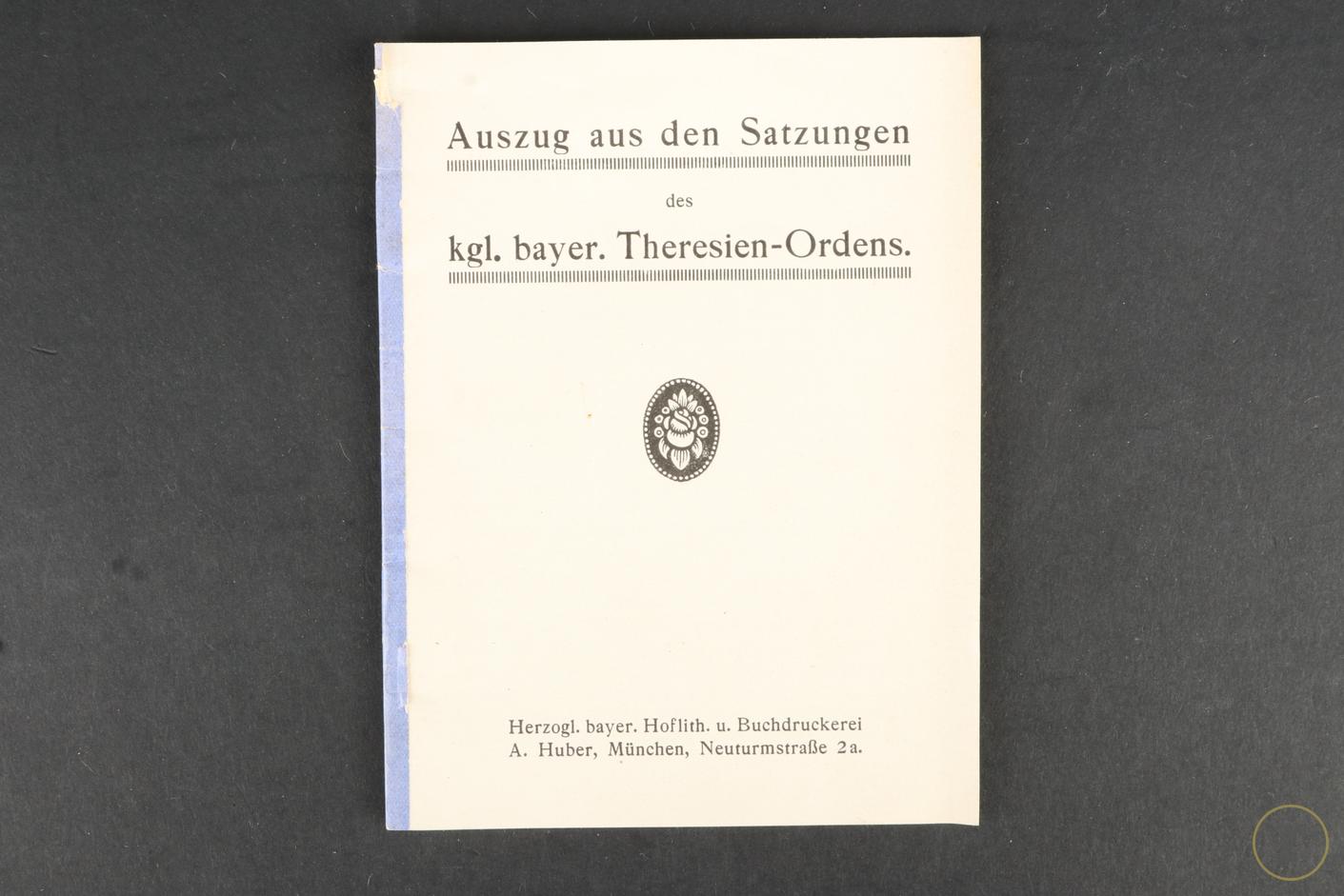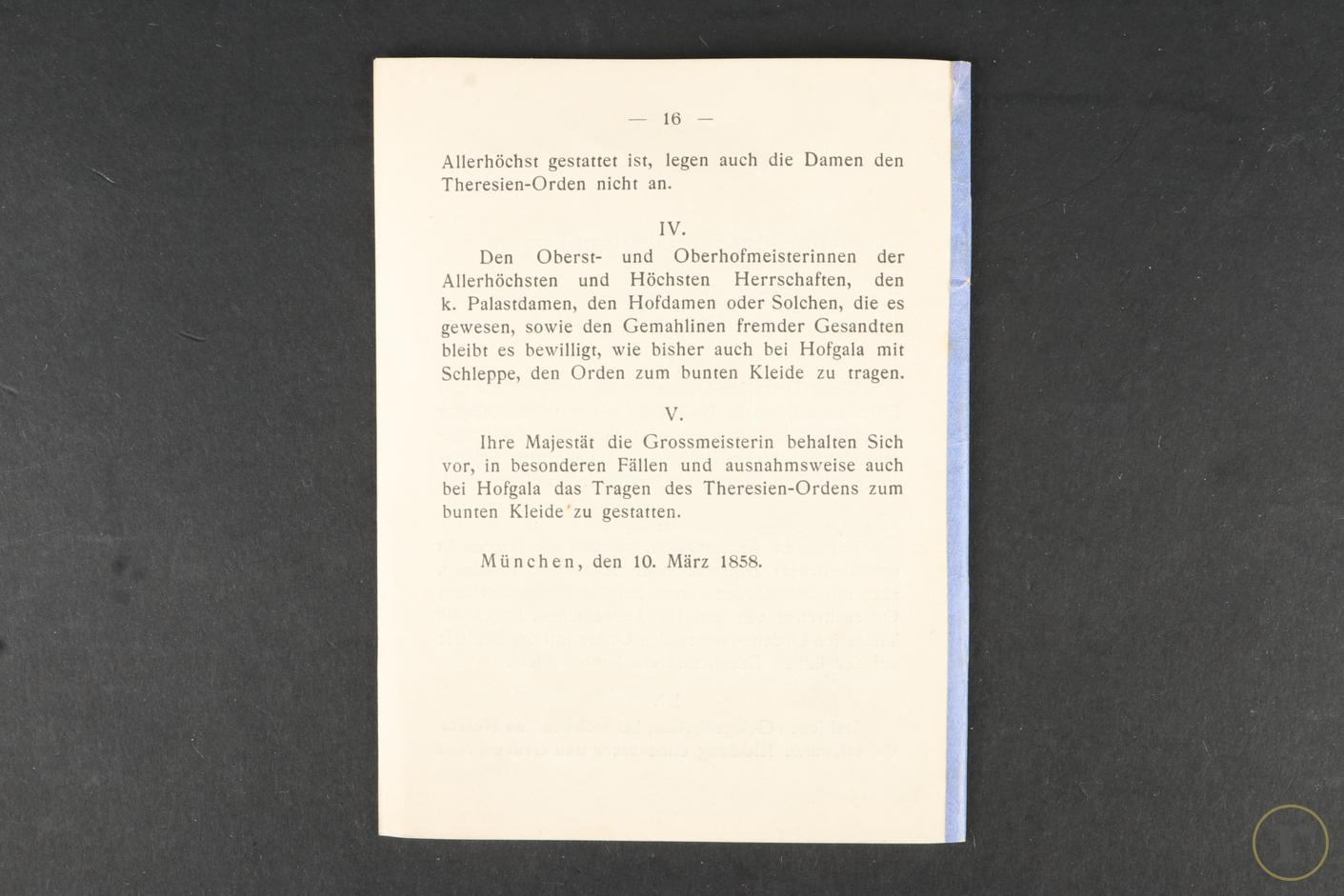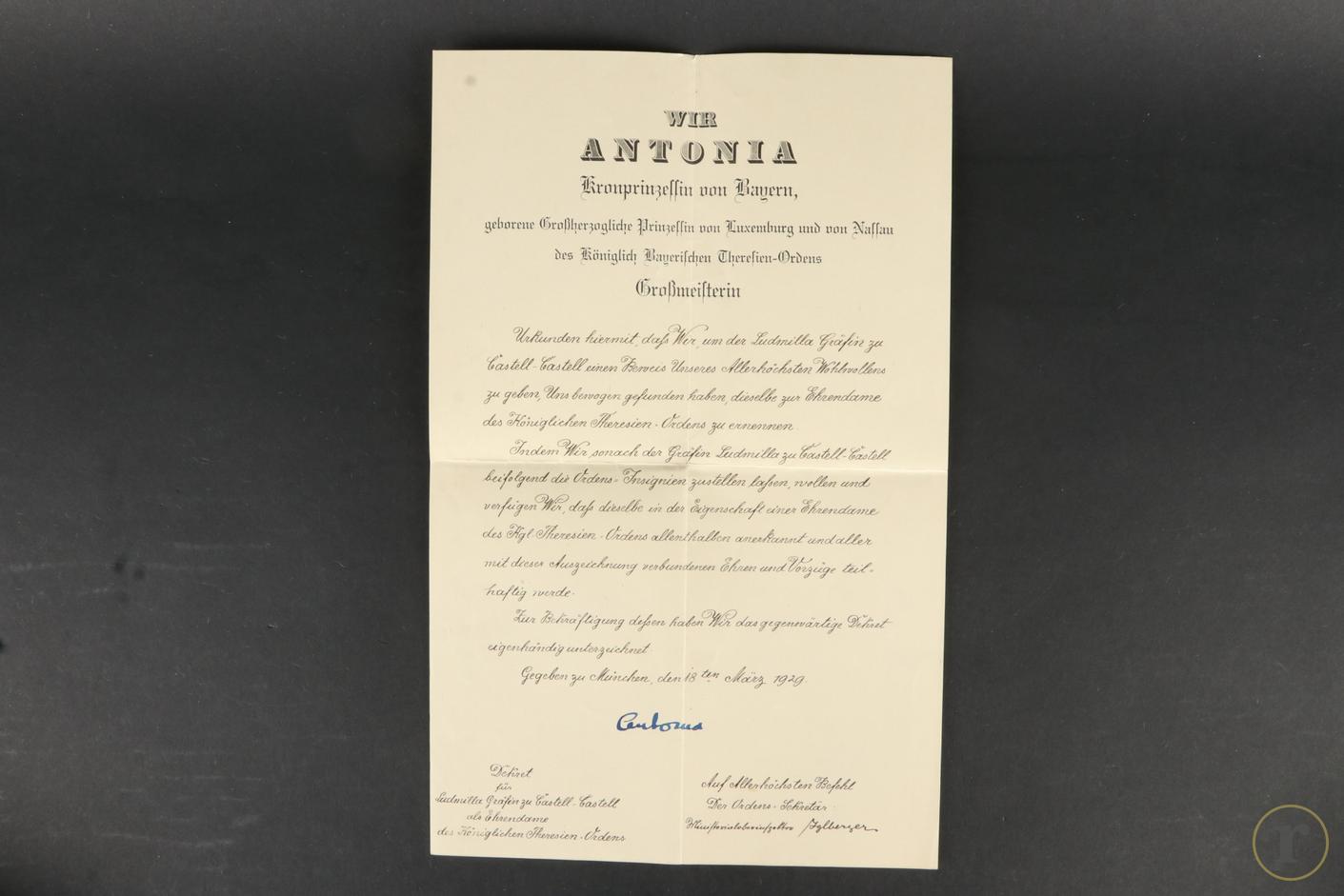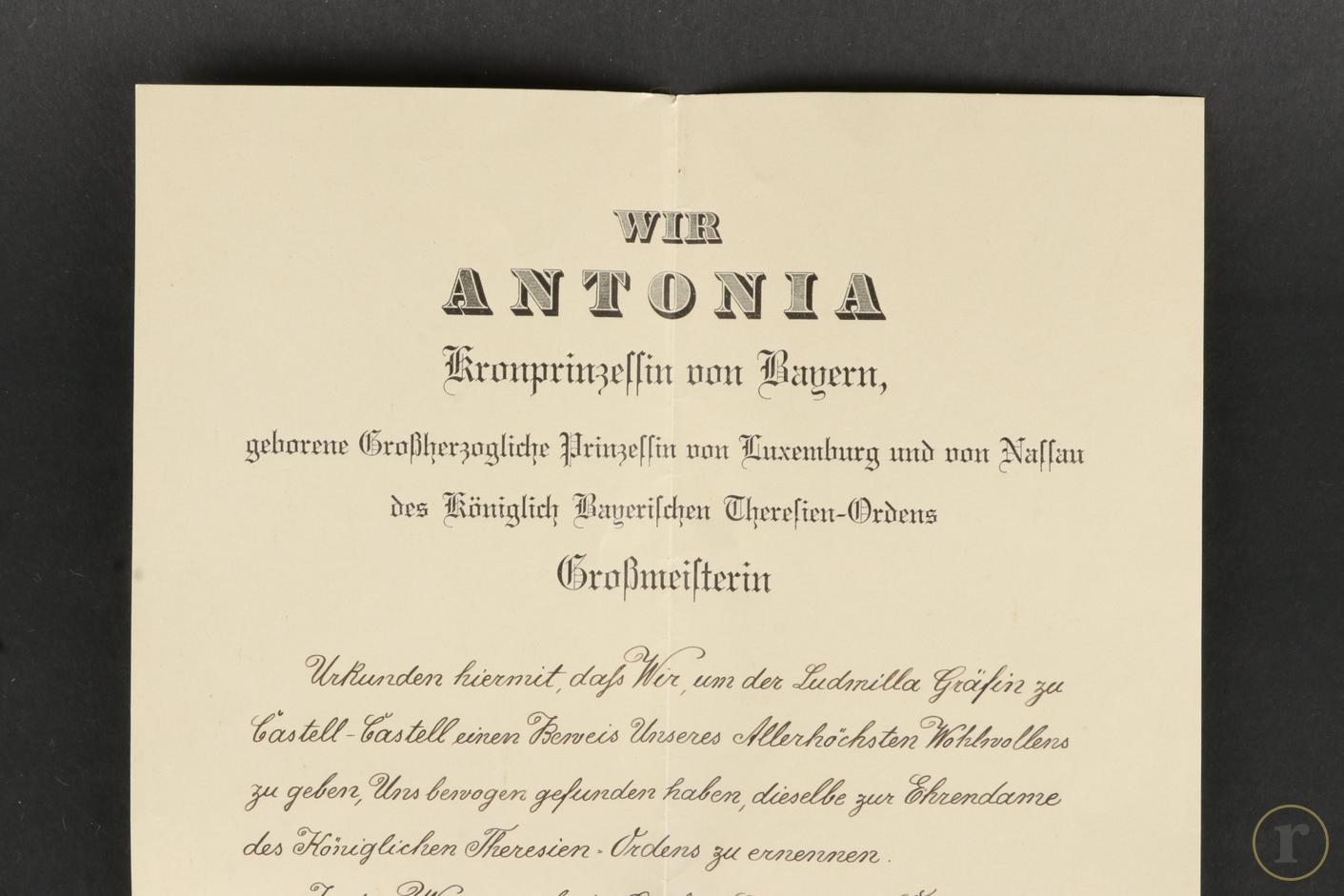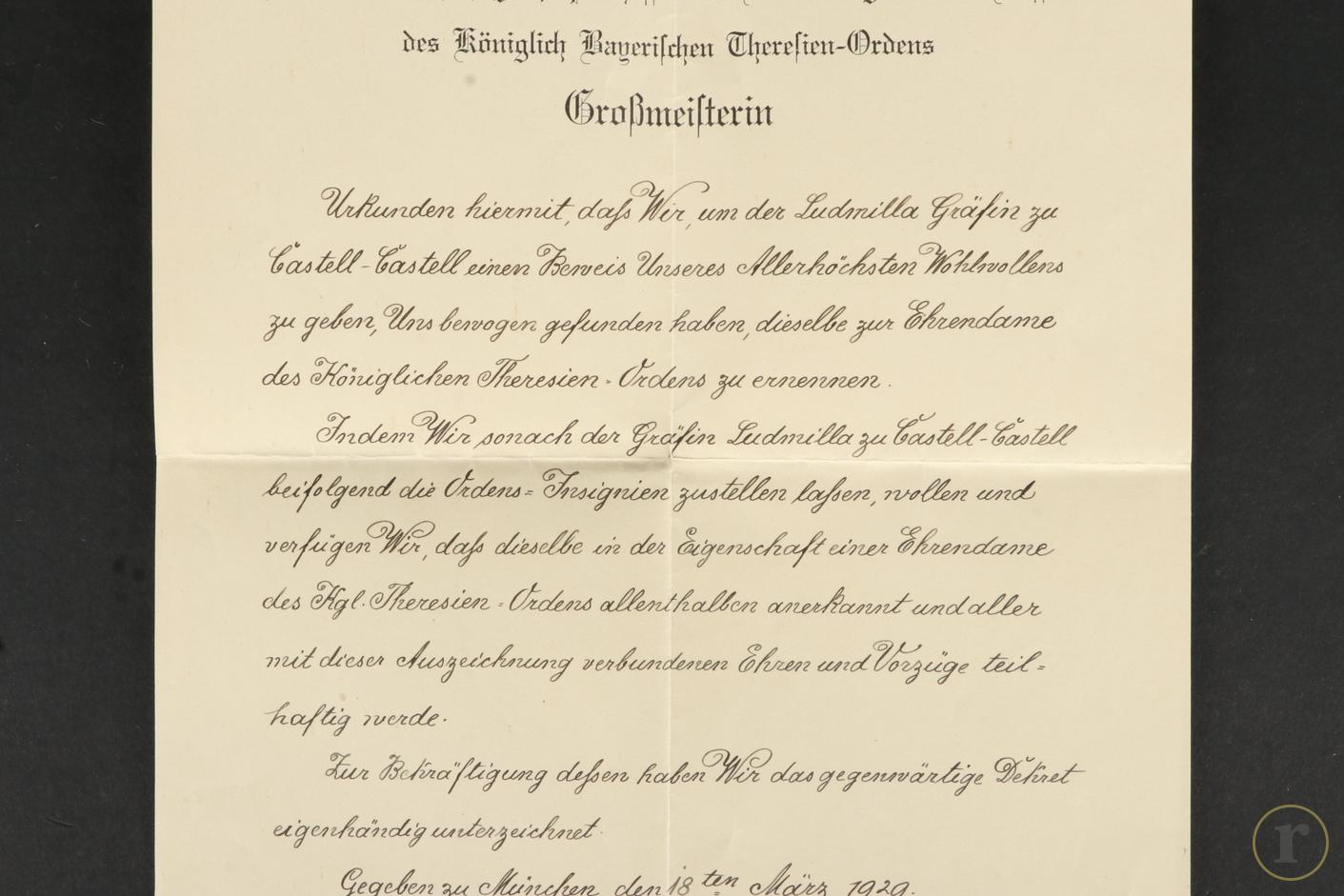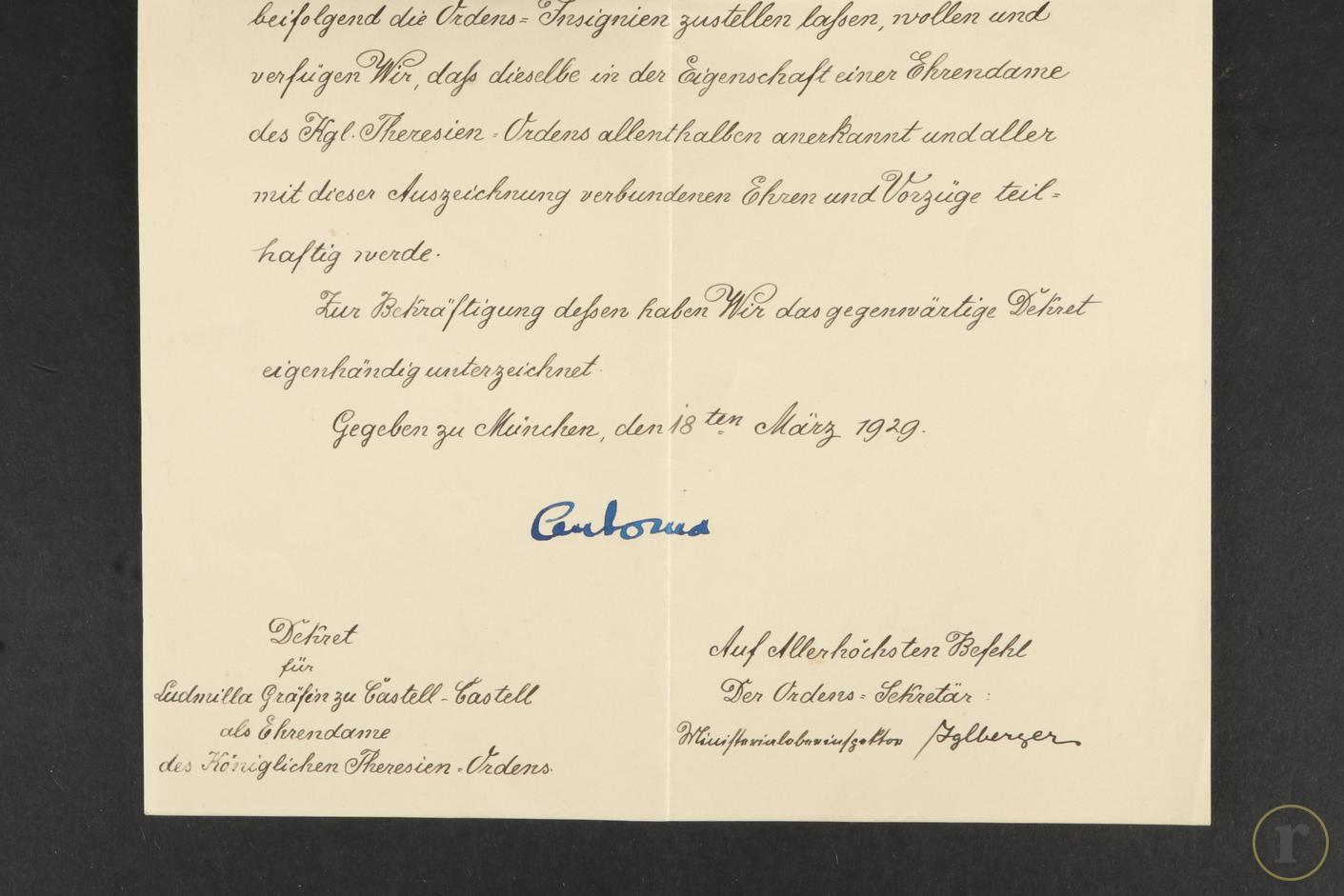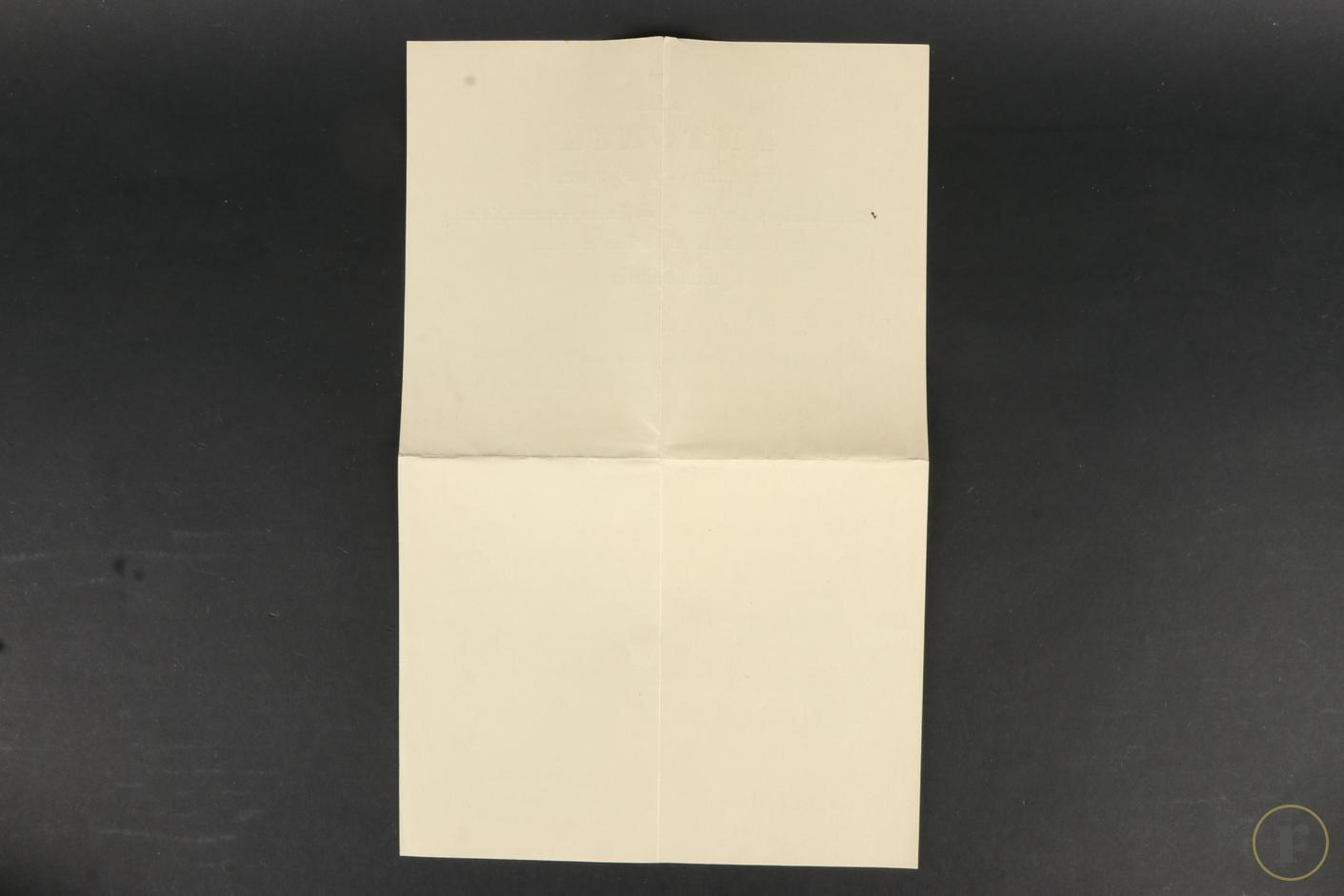Order cross on the sash
Militaria Price Guide

Bavaria - Group of a Lady of Honor of the Theresa Order
on a reduced buyer's premium
We are buying single items and entire collections! Call +49 8541 9053699
-
PAYMENT
-
HOW CAN I PAY FOR MY ORDER?
AUCTIONSYou will receive an e-mail confirming your successful bids the day after the auction has ended. In your personal my ratisbon's you will be able to inform us about your most convenient payment method for this order or tell us about an alternative shipping address.
If we don’t hear from you within 24 hours, we will send an invoice choosing the payment and shipping options which we think are the most comfortable ones to you. If you decide to change your shipping or payment method after receiving your invoice, just drop us a line or visit my ratisbon's/ORDERS for any more details.
SHOP ORDERSChoose your payment method when ordering and submit your order. Once your order has been received we will send an invoice including your shipping costs and your payment instructions.
After receiving the invoice, the order must be paid within 7 days.
Please contact us to discuss layaway options.To learn more about paying at ratisbon's, please see your FAQ pages.
WE ACCEPT FOLLOWING PAYMENT METHODS
-
-
Versand
-
HOW DO YOU SHIP MY NEW TREASURES?
PACKING & TRACKINGWe usually send out orders within 1-3 working days after your payment has been received. In most cases, we are faster than this! We will inform you when your goods are being dispatched and provide a tracking number, In addition, you can always check your order status at my ratisbon's/ORDERS. Delivery times will vary depending upon the delivery destination and type of shipping service you have chosen.
SHIPPING TO ALTERNATIVE ADDRESSIf you prefer to have your order shipped to your work address or a friend during your absence, we will happy to arrange this for you. Send us an email letting us know about your new shipping address and we will be happy to send an updated invoice to you.
OUR LOGISTIC PARTNERS ARE AS FOLLOWS
-
-
OUR GUARANTEE
-
 OUR GUARANTEE!
OUR GUARANTEE!We only offer collectables which to the best of our specialists knowledge are authentic. About 15% of all consignments are returned to the consignor after extensive research due to authenticity issues.
Unlike traditional auction houses we do offer a full right of return. If you are not satisfied with what you won or bought, you may return it within 14 days. Please inform us and we will instruct you on how to return the goods. For more information, please visit FAQ pages.
Important note: Cancelling bids after an auction may disappoint the consignor, who like you is a collector. This situation is easy to avoid. We encourage you not to bid on any collectable if you are unsure if it fits into your collection. Ask us to cancel your bid 24 hours prior to the end of an auction to avoid this situation.
-
COUNTRY Imperial Germany
DIMENSIONS 68.5 x 41.7 mm
WEIGHT 18.9 g
 US LOT US7-0485
US LOT US7-0485EAN 3000000056387
 US LOT US7-0485
US LOT US7-0485PERIOD until 1918
COUNTRY Imperial Germany
MATERIAL gold
DIMENSIONS 68.5 x 41.7 mm
MAKER
WEIGHT 18.9 g
COUNTRY Imperial Germany
 US LOT US7-0485
US LOT US7-0485DIMENSIONS 68.5 x 41.7 mm
EAN 3000000056387
MAKER
WEIGHT 18.9 g
Bavaria - Group of a Lady of Honor of the Theresa Order
Description
Full set of decoration, bow, smaller and full size sash, case of issue, statues and award document to a Lady of Honor of the Bavarian Order of Theresa. This particular set was awarded on March 18, 1929, to the Graefin Ludmilla to Castell-Castell.
The cross itself was made by Eduard Quellhorst in Munich and represents an older, probably returned cross from the 19th century. The Cross is marked as such: “EQ”
The Order was established on December 12, 1827, by Queen Therese of Bavaria, wife of King Ludwig I of Bavaria. She created an endowment to provide an annual pension to twelve unmarried noblewomen: six received 300 guilders each, while the remaining six received 100 guilders each. The pension ended if a member married, but if the marriage was deemed appropriate for her rank, she could retain the order's insignia and be referred to as an Ehrendame (Lady of Honour).
The rank of Ehrendame was also held by various other women, including all the princesses of the House of Wittelsbach. Bavarian women paid a reception fee of 55 guilders, while foreign women paid 220 guilders.
The order's insignia, worn on the left breast, features a blue-enameled Maltese cross with a broad white border, topped with a gold royal crown. The cross's four arms are adorned with blue-and-white Bavarian lozenges. At the center of the cross is a white circular medallion bordered in gold, bearing the letter "T." On the reverse side of the medallion are the year 1827 and the order's motto, “Unser Erdenleben sey Glaube an das Ewige” (Our life on Earth may be Faith in Eternity).
The ribbon of the order is white with two sky-blue stripes along the edges, with the inner stripe being narrower than the outer. The sash is a similarly colored broad ribbon worn diagonally from the right shoulder to the left hip.
Condition
1-
Seller
History Trader Inc., 521 Thorn Street #165, Sewickly, PA 15143-0165, USA
The Order of Therese was founded in one class on December 12, 1827 and was supposed to express favorable sentiments to the royal daughters of Bavaria. It was planned to admit 12 beneficiaries per year into the order. Each beneficiary received a stipend of 300 guilders annually. The applicants had to be members of Bavarian royalty and had to be single. Admittance was possible from the age of 10 on. Once married the members of the order would be eligible to receive one last pay as a dowry equivalent.
The Grand Master of the order was the Bavarian Queen or one of the Bavarian Princess, if appointed by the King.
The Grand Master of the order was able to appoint additional Honorary Ladies to the order. Yet, permission had to be granted by the Bavarian King. Those Honor Ladies had to pay an admission-fee to sustain the order. The fee was set to be 55 guilders for bavarian citizens and 110 guilders for foreigners The decorations had to be returned after a member's passing. The order’s motto was:”UNSER ERDENLEBEN SEY: GLAUBE AN DAS EWIGE*” (Our life on earth is: belief of eternity*).
The admission fee was raised shortly after the foundation for foreigners to 230 guilders in 1829. From 1836 on a member that finally married into a family having income of more than 300 guilders had to return the order insignia and repay the annual stipend. The ways how the order was worn changed in 1858, so that members would present the badge on a sash when in royal court and on the chest suspended from a bow in situations where men had to wear their orders. Wear on “casual” dresses had to be approved by the Grand Master. The admission fees and stipends were adjusted to German Reichs Currency in 1876. 516 Mark for the members stipends and 100 respectfully 600 Mark to join for Honor Ladies. The fee for foreigners was adjusted to 800 Mark in 1904.
The orders cross is a light blue enameled maltese cross with a white enameled border. Bavarian “Wecken” (rolls) are attached in between cross arms. The Cross is suspended from a single sided crown. The avers medallion shows the golden cypher “T” for Therese on a white enameled background surrounded by a green enamel crown of rue. The reverse features the golden foundation year “1827” on a white background surrounded by the orders motto.
Besides the plain insignia of the order, two variations with diamonds are known:
-
Decoration with a diamond encrusted cypher “T”. First record of a cross being awarded dates back to 1855.
-
Decoration with a diamond encrusted cypher “T”, as well as a diamond encrusted crown. Initially awarded 1834 to members of ruling houses.
Awarded were as follows: Cross with cypher and crown in diamonds, 108, Cross with cypher in diamonds, 237 and 750 plain crosses.
